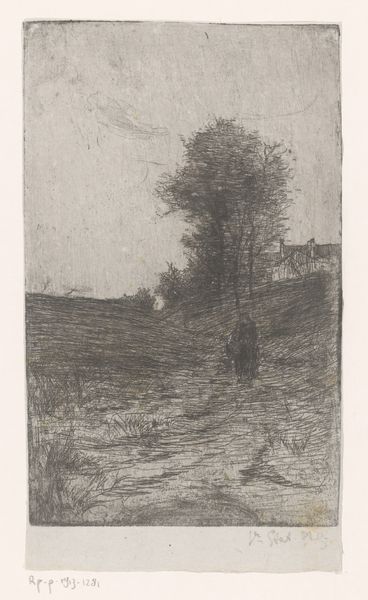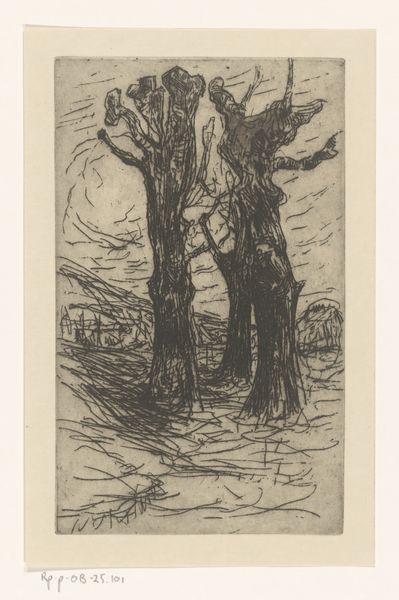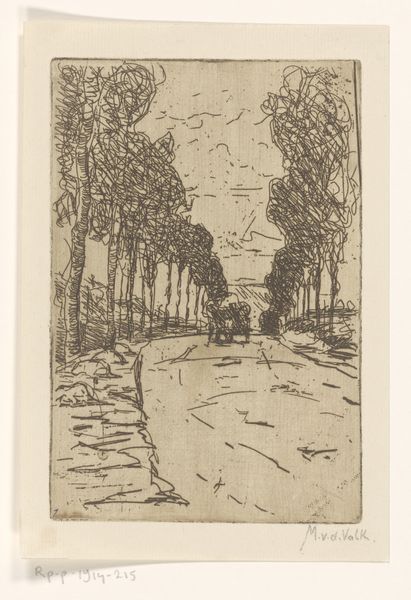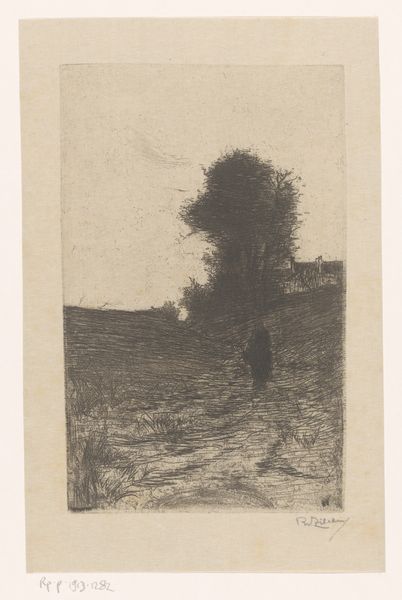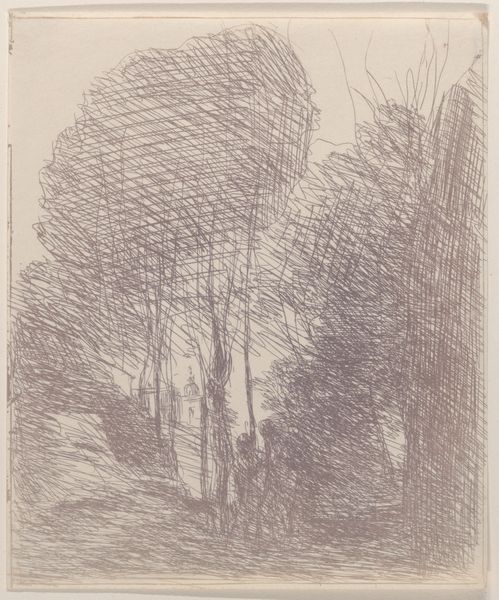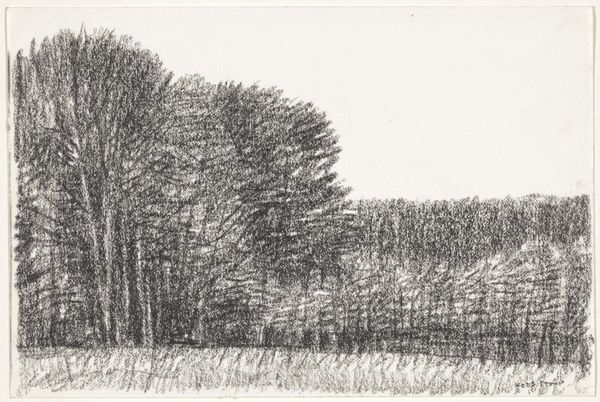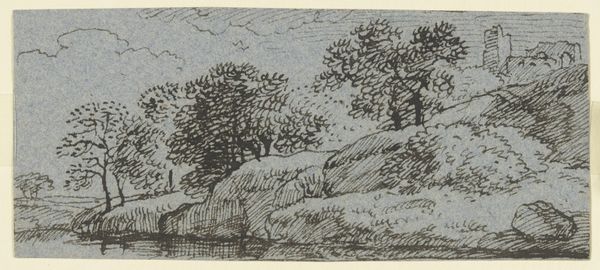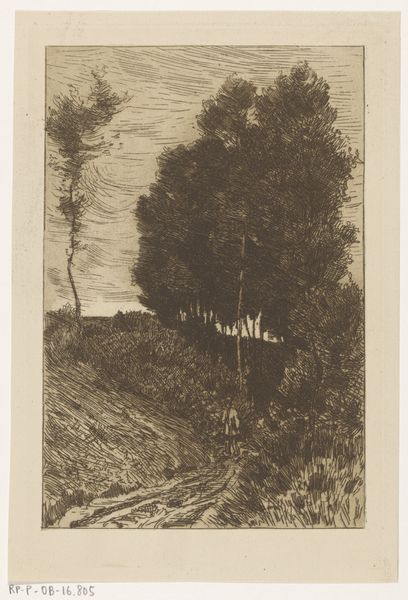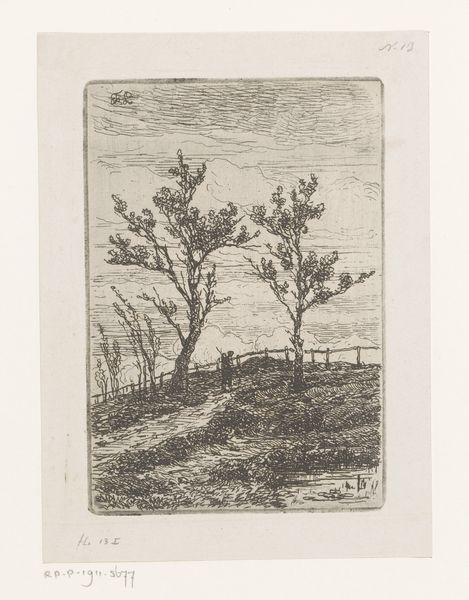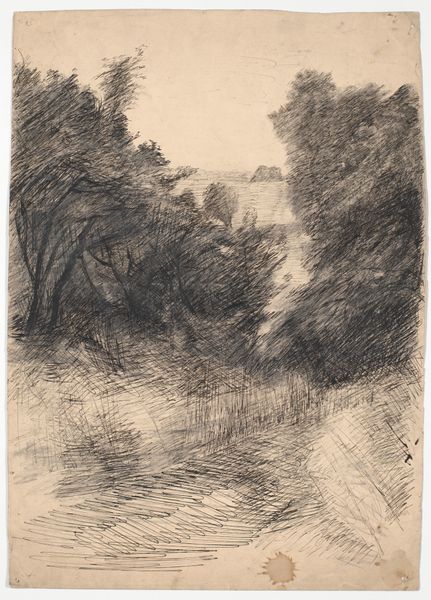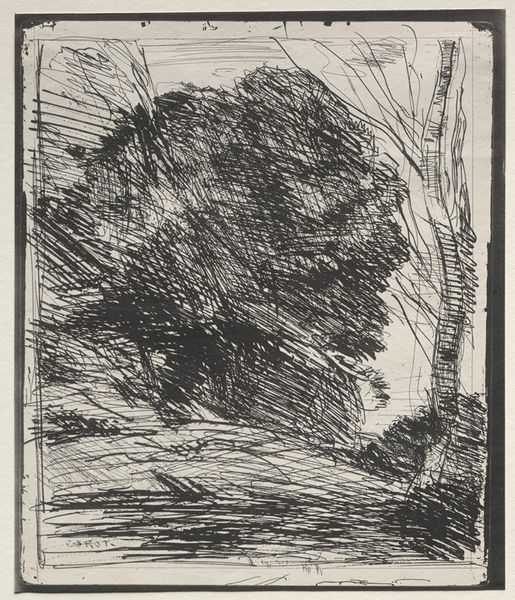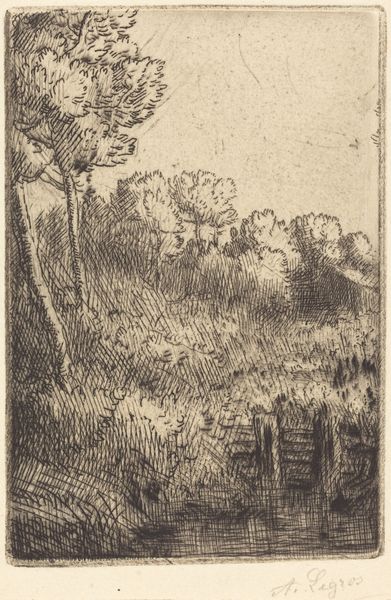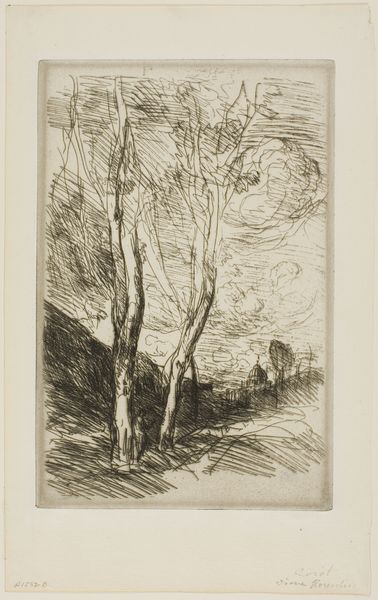
drawing, paper, ink
#
drawing
#
pen drawing
#
landscape
#
paper
#
ink
#
line
#
modernism
Dimensions: height 234 mm, width 130 mm
Copyright: Rijks Museum: Open Domain
Editor: So, here we have Julie de Graag's "Drie bomen bij een stenen muur" from 1922, made with ink on paper. There's a starkness to it, almost bleak with its monochromatic palette and linear style. What do you see in this piece beyond the obvious subject matter? Curator: I see a subtle rebellion against the dominant artistic narratives of the time. De Graag, a woman artist working in the early 20th century, often found herself at the margins. This drawing, with its deliberate use of simple lines and almost brutal honesty in portraying nature, could be read as a rejection of the more romanticized, idealized landscapes favored by male artists. What do you think about the wall itself? Does it represent boundaries, literal and metaphorical? Editor: That's interesting. I hadn't thought of it that way. I was more focused on the trees as symbols of resilience, standing tall against the elements. The wall felt more like a grounding element. Curator: Consider this: does the wall create a division between nature and civilization, and how might that resonate with De Graag's own experience as a woman navigating the art world? Are the trees “inside” or “outside” of society? It seems pertinent to interrogate how women artists at the time, faced patriarchal societal constructs and standards when exhibiting landscape works. How do their depictions confront or embrace these boundaries? Editor: So you're suggesting the simplicity could be a conscious choice, a statement even, against the artistic establishment? Curator: Precisely. By stripping away the embellishments, De Graag forces us to confront the rawness of the scene, and perhaps, the rawness of her own position within society. Editor: That really changes my perspective. I was initially drawn to the composition but didn't consider the social commentary. Thanks! Curator: It is a crucial aspect when dealing with women's art; reading not just what's there, but what had to be overcome to create it. Food for thought!
Comments
No comments
Be the first to comment and join the conversation on the ultimate creative platform.
